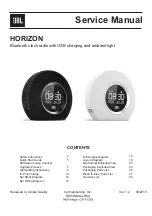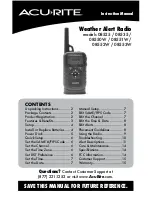
Troubleshooting:
More often then not, any trouble with the board not working is inevitably tracked down to soldering issues, so
this is the first thing to look for. Looking at the solder pads at the TOP of the board can be helpful. If the
hole around a part lead isn't full of solder, it probably isn't soldered on the bottom. Solder can stick to the
lead and look soldered, but didn't actually flow into the hole.
Another common issue is the tinning of the magnet wire used to wind the toroids. Even if you pre-tinned the wire,
sometimes it gets pulled through the pad past the tinned area. Use an ohm meter to verify continuity through the
coil.
Less common are misplaced parts. Resistors are most susceptible to ending up in the wrong place if the color code
is misread.
Even rarer are bad parts. IC's almost never go bad these days and most will survive being powered up if they were
installed backwards. The 2N700 and BS170 MOSFETs are static sensitive, so it is possible for these to be damaged
by handling, but again is rare.
If you can't spot the problem visually, time to break out the test equipment. For most of you, that will be a
DVM, but it's a lot quicker if you have a signal generator and Scope available.
Turning on the Offset cal mode effectively turns the DDS module into a signal generator at the IF frequency and
can be used to troubleshoot all the receiver stages except for the first mixer signal input. If you can hear the
beat note in the Cal mode, you know everything from the input of the first mixer (U5) to the headphones is
working and your problem is in the input filter or QSK switch.
The transmitter is as simple as it gets and rarely has problems, other then low power out which is always related
to the output filter. If there is no power output, make sure the connections to L5 are good and that Q4 is
turning on (and off!).
The IC voltage tables below might help in determining a problem area.
These voltages can vary +/- 0.25 volts; depending on the voltage output of
the regulators and possible loading by your voltmeter. Don't be concerned
unless the voltage is way off.
Table 7a:
U3,U5 SA612 mixer
Pin 1 1.4 V IN
Pin 2 1.4 V IN
Pin 3 0 V
GND
Pin 4 5.0 V OUT
Pin 5 5.0 V OUT
Pin 6 5.9 V OSC
Pin 7 5.4 V OSC
Pin 8 6.0 V V+
Table 7b:
IC U2 LM358 op amp
Pin 1 3.0 V OUT
Pin 2 3.0 V - IN
Pin 3 3.0 V + IN
Pin 4 0 V
GND
Pin 5 3.0 V + IN
Pin 6 3.0 V - IN
Pin 7 3.0 V OUT
Pin 8 6.0 V V+
Table 7d:
IC U7 74HC02 NOR GATE
Rx
Tx
Pin 1
0 V RF
out
Pin 2
0V
0V
in
Pin 3
5V
RF
in
Pin 4
0V
RF
out
Pin 5
5V
RF
in
Pin 6
0V
0V
in
Pin 7
0V
0V
GND
Pin 8
0V
RF
in
Pin 9
0V
0V
in
Pin 10 5V
RF
out
Pin 11 5V
RF
in
Pin 12 0V
0V
in
Pin 13 0V
RF
out
Pin 14 5V
5.0V Vcc
Pins 1, 4 and 13 will
measure about 2.5
volts with most DVM's
when transmitting
steady carrier. In
and out pins have
square wave signal
when transmitting.
Table 7e:
IC U4 MEGA 48 MPU processor
Rx
Tx
Pin function
Pin 1
5 or 0
2.5 V
Side tone
Pin 2
5.0 V
0 V
Paddle DOT in
Pin 3
5.0 V
0 V
Paddle DASH in
Pin 4
5 V
5 V
encoder
Pin 5
5 V
5 V
encoder
Pin 6
------
-----
Digit 4
Pin 7
5.0 V
5.0 V
Vcc
Pin 8
0 V
0 V
GND
Pin 9
------
-----
“a” segment
Pin 10 ------
-----
“c” segment
Pin 11 ------
-----
Digit 3
Pin 12 -----
-----
Digit 1
Pin 13 -----
-----
Digit 2
Pin 14 -----
-----
“d” segment
Pin 15 ------
-----
“f” segment
Pin 16 ------
-----
“b” segment
Pin 17 ------
-----
“g” segment
Pin 18 ------
-----
“dp” segment
Pin 19 ------
-----
“e” segment
Pin 20 5.0 V
5.0 V
AVcc
Pin 21 5.0 V
5.0 V
Aref
Pin 22 0 V
0 V
GND
Pin 23 3.4/4.0/
4.7
40/30/20
band sw
A/D sw input
Pin 24 5V
0V
MUTE OUT
Pin 25 0 V
5.0 V
Tx enable
Pin 26 0 or 5
DDS clock
Pin 27 0 or 5
DDS data
Pin 28 5V
5V
DDS load
Table 7c:
IC U1 LM386 audio
Pin 1 1.25V
Pin 2 0 V
- IN
Pin 3 0 V
+ IN
Pin 4 0 V
GND
Pin 5 2.9V
OUT
Pin 6 6.0V
V+
Pin 7 3.0V
Pin 8 1.25V




































